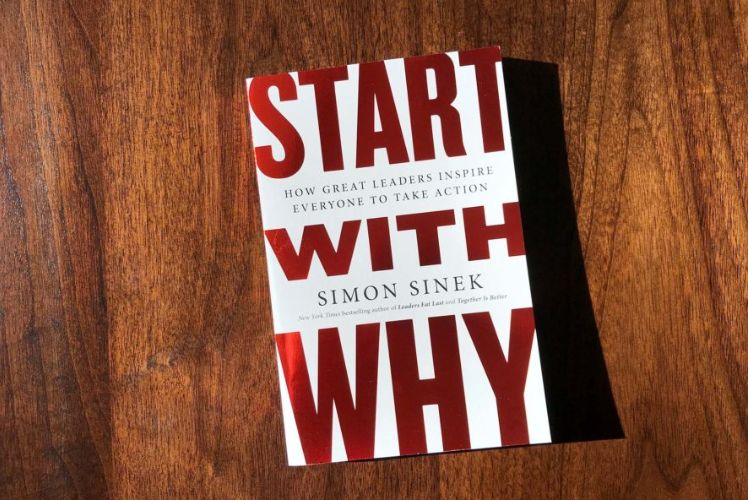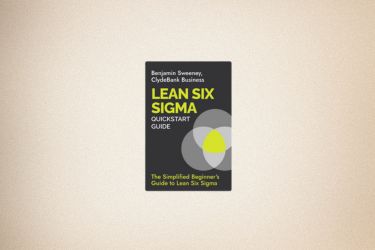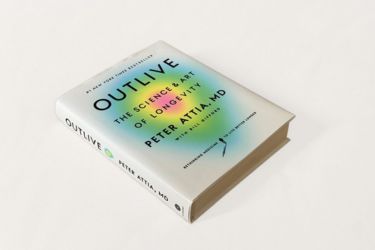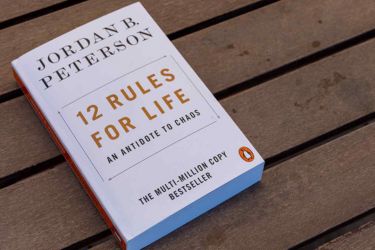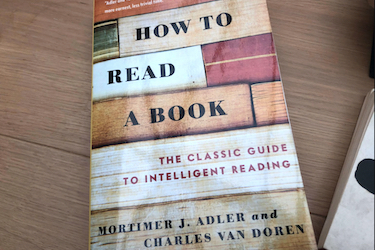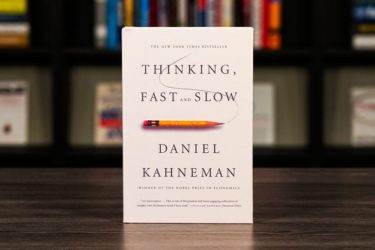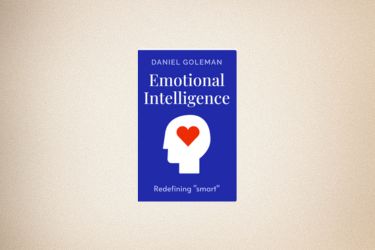Most successful leaders and companies share one powerful trait: they know exactly why they do what they do. Simon Sinek's "Start with Why" explores this simple yet transformative concept through his famous Golden Circle model, which places purpose at the centre of all great leadership and business success.
The book argues that people don't buy what you do, but why you do it, making purpose the driving force behind loyalty, inspiration, and lasting success. Sinek supports this idea with compelling examples from Apple, Martin Luther King Jr., and the Wright brothers, showing how starting with "why" rather than "what" or "how" creates movements that change the world.
We find this book particularly valuable for anyone seeking to understand what separates good leaders from truly great ones. Whether you're running a business, leading a team, or simply trying to inspire others, Sinek's insights offer practical guidance for communicating with purpose and creating meaningful impact in your work and life.
Key Takeaways
- Great leaders inspire action by communicating their purpose and beliefs before explaining their products or methods
- The Golden Circle model demonstrates that successful organisations work from the inside out, starting with why they exist
- Personal and professional success comes from aligning your actions with your core values and communicating that purpose to others
Overview of Start with Why
Start with Why presents Simon Sinek's Golden Circle framework, which argues that great leaders inspire action by communicating their purpose first. The book demonstrates how this approach transforms leadership effectiveness and organisational success through real-world examples and scientific backing.
Purpose and Main Arguments
Start with Why challenges traditional business thinking with a simple but powerful concept. Most organisations communicate from the outside in, starting with what they do and how they do it. Sinek argues this approach fails to inspire genuine loyalty or action.
The book's central argument revolves around the Golden Circle framework. This model consists of three concentric circles: Why (purpose), How (process), and What (product). Great leaders and organisations start with Why.
People don't buy what you do; they buy why you do it. This principle explains why some companies like Apple create passionate followings whilst others with similar products struggle. The emotional connection comes from shared beliefs, not features or benefits.
Sinek uses examples from leaders like Steve Jobs and Martin Luther King Jr. He shows how they communicated their beliefs first, then explained their methods and products. This approach creates trust and inspires people to act.
Impact on Leadership and Organisations
The Golden Circle transforms how leaders approach communication and decision-making. When leaders start with why, they attract people who believe what they believe. This creates stronger teams and more loyal customers.
Organisations that embrace this framework see several benefits. Employee engagement improves because people understand their work's purpose. Customer loyalty increases because the relationship goes beyond transactions.
The book explains why some companies maintain success whilst others fade. Those with clear purpose adapt to change better. They make decisions based on their beliefs, not just market trends.
Leaders who start with why also build more innovative cultures. Teams feel inspired to find creative solutions when they understand the bigger picture. This leads to breakthrough products and services.
Origins and Development of the Golden Circle
Simon Sinek developed the Golden Circle after studying successful leaders and organisations. He noticed patterns in how great leaders communicated differently from average ones. This research formed the foundation of his framework.
The concept draws from biology and psychology. Sinek connects the Golden Circle to how our brains work. The limbic system, which controls emotions and decision-making, responds to why-based messaging.
The framework gained popularity after Sinek's TED talk in 2009. His presentation became one of the most-watched TED talks ever. This success led to speaking engagements and consulting work with major companies.
Start with Why builds on these insights with detailed examples and practical applications. The book shows how to implement the Golden Circle in real business situations. It provides tools for leaders to discover and communicate their own why.
The Golden Circle Model
The Golden Circle represents a three-layer framework where Why forms the core purpose, How outlines the process, and What describes the tangible products or services. This model explains how great leaders communicate from the inside out, starting with their deepest motivations rather than surface-level features.
Understanding Why, How, and What
The Golden Circle consists of three concentric circles that work from the inside out. Why sits at the centre and represents our core beliefs and purpose.
How forms the middle layer. This describes the process or values that make us different from others.
What makes up the outer circle. This includes all the products we sell or services we offer.
Most organisations communicate backwards. They start with what they do and try to convince people why it matters.
Simon Sinek argues that inspiring leaders do the opposite. They begin with why they exist and work outward.
Why answers the question of purpose. It explains the reason we get up every morning beyond just making money.
How covers our unique approach or values. What simply describes the tangible results of our beliefs.
This inside-out approach creates stronger emotional connections with people who share similar beliefs.
Biological and Psychological Foundations
Our brains respond differently to each part of the Golden Circle. The limbic system controls emotions and decision-making but cannot process language well.
This part of our brain responds to Why messages. It drives our gut feelings and motivations about choices we make.
The neocortex handles rational thought and language. This section processes What information like facts, features, and benefits.
When we start with Why, we speak directly to the decision-making part of the brain. People feel something before they think about it.
Starting with What only engages the analytical brain. People understand the information but may not feel compelled to act.
This biological difference explains why features and benefits alone rarely inspire action. We need emotional connection first.
The limbic brain seeks patterns and belonging. When our Why matches someone else's beliefs, trust develops naturally.
Communication of Vision and Values
Great leaders use the Golden Circle to communicate their vision effectively. They share their beliefs before explaining their methods or products.
This approach attracts people who believe what they believe. It creates loyal followers rather than just customers or employees.
Vision emerges when we clearly articulate our Why. People can see where we want to go and why it matters.
Values show up in our How. They guide the actions we take to achieve our purpose.
When we communicate from Why to What, our message becomes more compelling. People connect with the purpose behind our actions.
Leaders who inspire action talk about their dreams and challenges first. They explain what success looks like in human terms.
This method works for individuals, teams, and entire organisations. It helps align everyone around shared beliefs and common goals.
The Golden Circle transforms communication from selling to sharing. We invite others to join our cause rather than convincing them to buy our products.
Real-World Examples and Case Studies
Sinek demonstrates his "Start with Why" concept through compelling examples from business leaders who built their brands around purpose rather than products. These case studies show how focusing on why creates stronger connections with customers and employees than traditional marketing approaches.
Apple and Steve Jobs
Steve Jobs transformed Apple by starting with a clear purpose: challenging the status quo and thinking differently. This why became the foundation of Apple's brand identity.
Apple doesn't sell computers by listing technical specifications first. Instead, they communicate their belief in innovation and creative thinking. This approach attracts customers who share similar values.
The company's marketing reflects this philosophy. Their advertisements focus on empowerment and creativity rather than product features. This strategy helped Apple build one of the most loyal customer bases in technology.
Jobs understood that people don't buy what you do; they buy why you do it. Apple's success demonstrates how a clear purpose can differentiate a brand in crowded markets.
Entrepreneurs and Early Adopters
Early adopters connect with new ideas because they believe in the underlying purpose. These customers aren't motivated by practical benefits alone.
Sinek explains that entrepreneurs who clearly communicate their why attract followers who share their vision. These early supporters become advocates for the cause, not just the product.
The Wright brothers succeeded where others failed because they believed flight would change the world. Their clear purpose attracted a team of believers who helped make aviation possible.
Early adopters take risks on unproven products because they want to be part of something meaningful. They purchase based on faith in the vision rather than guaranteed results.
Business Leaders Beyond Technology
Many successful business leaders across different industries apply the "Start with Why" principle. Southwest Airlines built their brand around making air travel accessible to everyone.
Martin Luther King Jr. inspired millions by sharing his dream of equality. He didn't start with detailed policies; he began with his vision for change.
These leaders attracted followers because they communicated beliefs that resonated with people's values. Their movements grew because supporters felt part of something bigger than themselves.
Business leaders who focus on purpose create organisations that inspire loyalty and commitment. Employees work harder when they understand and believe in the company's mission.
Application of Start with Why in Leadership
Leaders who apply Sinek's "why" approach create stronger connections with their teams and achieve better results. This method transforms how leaders build trust, motivate teams, and communicate their organisation's core purpose.
Building Trust and Inspiring Action
When leaders start with why, they create authentic connections that build lasting trust. People follow leaders who share their beliefs, not just those with authority or expertise.
Great leaders like Martin Luther King Jr. inspired millions by clearly communicating their deeper purpose. He didn't start with what civil rights laws needed changing. Instead, he shared his vision of equality and justice.
Trust develops through consistent alignment between:
- What leaders say their purpose is
- How they make decisions
- The actions they take daily
When we see leaders whose behaviour matches their stated why, we naturally trust them more. This trust becomes the foundation for inspiring others to take action.
Leaders who focus only on what they do or how they do it struggle to create this emotional connection. They may achieve short-term compliance but rarely inspire long-term commitment.
Motivation and Team Engagement
Purpose-driven leadership taps into intrinsic motivation rather than relying solely on external rewards. When team members understand the why behind their work, they become more engaged and committed.
Effective leaders connect individual roles to larger purpose by:
- Explaining how each person's work contributes to the mission
- Sharing stories that illustrate the impact of their efforts
- Regularly reinforcing the organisation's core values
This approach creates what Sinek calls "inspired" employees rather than simply motivated ones. Inspired people work with passion and find meaning in their daily tasks.
Teams led with a clear why show higher retention rates and better performance. They understand not just what needs doing, but why it matters.
Communicating Purpose in Organisations
Successful leaders use Sinek's Golden Circle to structure their communication. They start with why, then explain how, and finally describe what they do.
This communication pattern works because it mirrors how our brains process information. The why connects with our emotions and decision-making centres.
Clear purpose communication includes:
- Simple, memorable statements of organisational mission
- Regular reinforcement through meetings and internal communications
- Stories that demonstrate values in action
Leaders must ensure their why remains consistent across all levels of the organisation. Mixed messages about purpose quickly undermine trust and engagement.
We see the most effective leaders return repeatedly to their core purpose when making difficult decisions or navigating challenges.
Relevance for Individuals and Personal Development
Sinek's "Start with Why" framework extends beyond business leadership into personal growth and self-discovery. The book's core principles help individuals identify their purpose whilst building authentic personal brands and making more intentional career decisions.
Finding Your Own Why
The most challenging aspect of applying Sinek's framework involves identifying our personal "why". Unlike organisations, we often struggle to articulate what truly motivates us beyond external rewards.
Our personal why represents the deeper purpose behind our actions and decisions. It's not about what we do for work or how we do it.
The process requires honest self-reflection about our values and beliefs. We must examine moments when we felt most fulfilled and energised.
Key questions to explore:
- What activities make us lose track of time?
- Which achievements brought genuine satisfaction rather than just recognition?
- What injustices or problems do we feel compelled to address?
Many people discover their why through examining childhood interests or recurring themes in their life choices. The goal isn't finding a perfect statement immediately but developing clarity about what drives us.
Personal Branding and Growth
Our personal brand becomes more authentic when we lead with our why rather than our accomplishments. This approach creates stronger connections with others who share similar values.
Traditional personal branding focuses on showcasing skills and achievements. Sinek's approach suggests we start with our beliefs and motivations instead.
When we communicate our purpose first, we attract opportunities that align with our values. This leads to more meaningful professional relationships and career satisfaction.
Benefits of why-based personal branding:
- Attracts like-minded collaborators and mentors
- Creates consistent messaging across different contexts
- Builds trust through authentic communication
- Differentiates us from others with similar qualifications
The challenge lies in articulating our why without sounding rehearsed or insincere. We need practice translating our purpose into everyday conversations and professional interactions.
Influence on Career and Life Choices
Understanding our why transforms how we evaluate opportunities and make major decisions. Instead of focusing solely on salary or status, we consider alignment with our deeper motivations.
Career decisions become clearer when we filter options through our purpose. We can assess whether potential roles, companies, or projects support our why.
This doesn't mean rejecting practical considerations like financial stability. Rather, we balance practical needs with purposeful choices when possible.
Decision-making framework:
- Does this opportunity advance my why?
- Will I be able to express my values in this role?
- Does the organisation's culture support my beliefs?
- How does this choice serve my long-term vision?
The framework also applies to personal relationships, volunteer work, and lifestyle choices. We make more intentional decisions that create coherent life narratives rather than random career moves.
Critical Evaluation and Limitations
Simon Sinek's "Start with Why" offers valuable insights into purpose-driven leadership whilst facing legitimate criticisms about oversimplification and limited scope. The framework provides practical benefits for leaders and organisations, though it doesn't address all complexities of modern business strategy.
Strengths and Contributions
The Golden Circle framework gives us a clear structure for understanding leadership communication. Sinek's approach helps leaders move beyond traditional features-and-benefits marketing to connect with deeper human motivations.
We see significant value in how the book bridges leadership theory with practical application. The framework works particularly well for startups and organisations seeking to build authentic brand identity.
Key contributions include:
- Simple, memorable framework for strategic thinking
- Strong emphasis on authentic leadership
- Clear examples from successful companies
- Practical guidance for internal communications
The book's strength lies in making complex leadership concepts accessible. Sinek demonstrates how purpose-driven messaging can create emotional connections with both employees and customers.
His emphasis on consistency between values and actions provides valuable guidance for leaders struggling with authentic communication.
Potential Criticisms
Critics argue that Sinek's framework oversimplifies organisational behaviour. Not all successful companies or leaders necessarily start with "why" in their decision-making processes.
The book lacks empirical evidence supporting its central claims. We find limited research backing the assertion that purpose-driven organisations consistently outperform others.
Main limitations include:
- Minimal discussion of practical implementation challenges
- Limited consideration of industry-specific factors
- Overemphasis on inspirational leadership styles
- Insufficient attention to operational excellence
The framework may not suit all business contexts. Companies in highly regulated industries or commodity markets might find operational efficiency more critical than inspirational purpose.
Some reviewers note that the book suffers from repetitive examples and could benefit from more diverse case studies beyond technology companies.
Comparisons with Other Theories
Sinek's approach aligns with transformational leadership theory but lacks its academic rigour. Where researchers like Burns and Bass provide detailed frameworks, "Start with Why" offers simplified concepts.
The Golden Circle shares similarities with Maslow's hierarchy, focusing on higher-order human needs. However, it doesn't address the complexity of individual motivations that psychology research reveals.
Theoretical comparisons:
- Transformational Leadership: Similar focus on inspiration, less systematic approach
- Brand Purpose Models: Overlaps with marketing theory, limited strategic depth
- Systems Thinking: Narrow focus compared to comprehensive organisational models
Marketing professionals might find the book's approach familiar but less sophisticated than established brand positioning frameworks. The emphasis on "why" echoes brand purpose strategies without addressing competitive positioning complexities.
We observe that whilst Sinek's framework provides accessible entry points, it works best when combined with more comprehensive leadership and marketing theories rather than as a standalone solution.
Frequently Asked Questions
Readers often have specific questions about Sinek's core concepts, practical applications, and how the book compares to other leadership approaches. These questions cover everything from the Golden Circle framework to real-world implementation strategies.
What are the core principles discussed in Simon Sinek's 'Start with Why'?
The Golden Circle forms the foundation of Sinek's framework. This model consists of three layers: Why (purpose), How (process), and What (product).
Great leaders and organisations start from the inside out. They begin with Why - their fundamental belief or purpose. This drives their How and What.
Most companies work backwards. They start with What they do, then explain How they do it. Rarely do they communicate Why they exist.
The Why creates emotional connection. People don't buy what you do; they buy why you do it. This principle applies to leadership, marketing, and organisational culture.
Trust and loyalty come from shared beliefs. When people understand your Why, they become advocates rather than just customers or employees.
How has 'Start with Why' influenced leadership and management practices?
Many organisations now prioritise purpose-driven leadership. Companies invest more time defining their core mission and values before developing strategies.
Modern recruitment practices have shifted focus. Employers increasingly seek candidates who align with company values rather than just technical skills.
Marketing strategies emphasise emotional connection. Brands tell stories about their purpose instead of only highlighting product features.
Team building approaches have evolved. Leaders spend more effort communicating the Why behind decisions and initiatives.
Performance management systems now incorporate purpose. Many companies measure employee engagement based on connection to organisational mission.
Can 'Start with Why' be applied to personal development, and if so, how?
Personal Why discovery becomes crucial for career decisions. Individuals can identify their core beliefs and values to guide professional choices.
Goal setting improves with purpose clarity. When we understand our Why, we make better decisions about which opportunities to pursue.
Motivation becomes more sustainable. Purpose-driven goals create intrinsic motivation that lasts longer than external rewards.
Relationship building strengthens through authenticity. When we communicate our Why clearly, we attract like-minded people and opportunities.
Career transitions become easier. A clear personal Why helps navigate job changes and entrepreneurial ventures with confidence.
What are the main critiques or points of contention regarding 'Start with Why'?
Some critics argue the framework oversimplifies complex business realities. Not every successful company or leader follows the Golden Circle model strictly.
The book relies heavily on anecdotal evidence. Scientific research supporting the Why-first approach remains limited in some areas.
Implementation challenges aren't adequately addressed. The book focuses more on concepts than practical steps for organisational change.
Cultural differences may affect applicability. The framework stems from Western business contexts and may not translate universally.
Repetitive content frustrates some readers. Key concepts are restated multiple times throughout the book without sufficient new insights.
How does 'Start with Why' compare with other popular leadership books?
Unlike traditional management books focusing on tactics, Sinek emphasises emotional and psychological aspects of leadership. His approach differs from data-driven leadership models.
The book shares similarities with Jim Collins' 'Good to Great' in exploring what separates exceptional organisations. Both authors examine purpose and culture.
Compared to Dale Carnegie's 'How to Win Friends and Influence People', Sinek's work focuses on authentic leadership rather than persuasion techniques.
The Golden Circle concept is simpler than complex frameworks in academic leadership texts. It provides an accessible model for practical application.
Sinek's emphasis on biology and human behaviour sets it apart. He connects leadership principles to evolutionary psychology and neuroscience.
What actionable advice does 'Start with Why' offer to entrepreneurs and business leaders?
Start by defining your personal and organisational Why. Write down the fundamental belief that drives your work and decision-making.
Hire people who believe what you believe. Skills can be taught, but shared values create stronger team cohesion and performance.
Communicate your Why consistently. Every marketing message, team meeting, and strategic decision should connect back to your core purpose.
Use the Golden Circle for presentations and pitches. Start with Why, explain How, then describe What you offer.
Build systems that reinforce your Why. Organisational processes, rewards, and culture should align with your stated purpose.
Measure success beyond profit margins. Track metrics that reflect your impact on the purpose you're trying to achieve.

